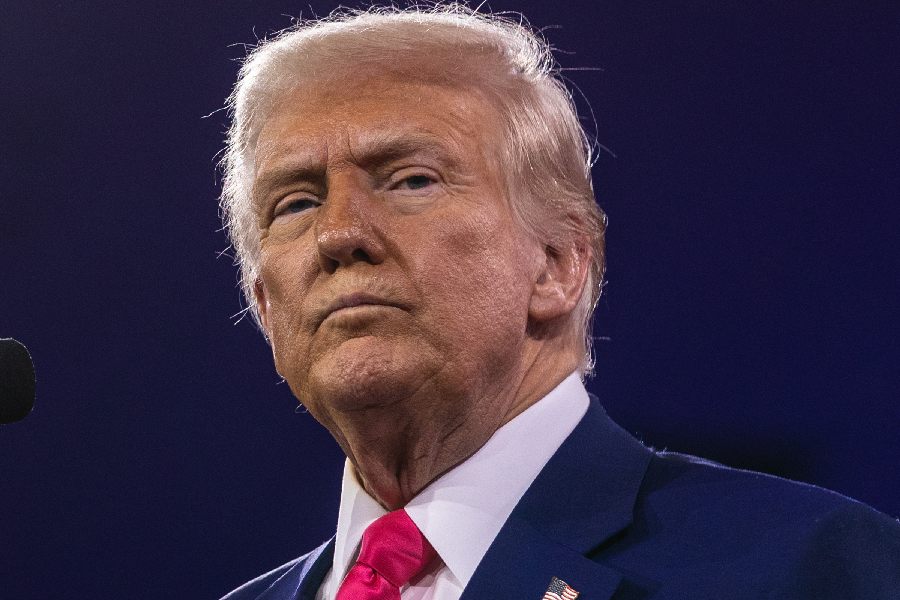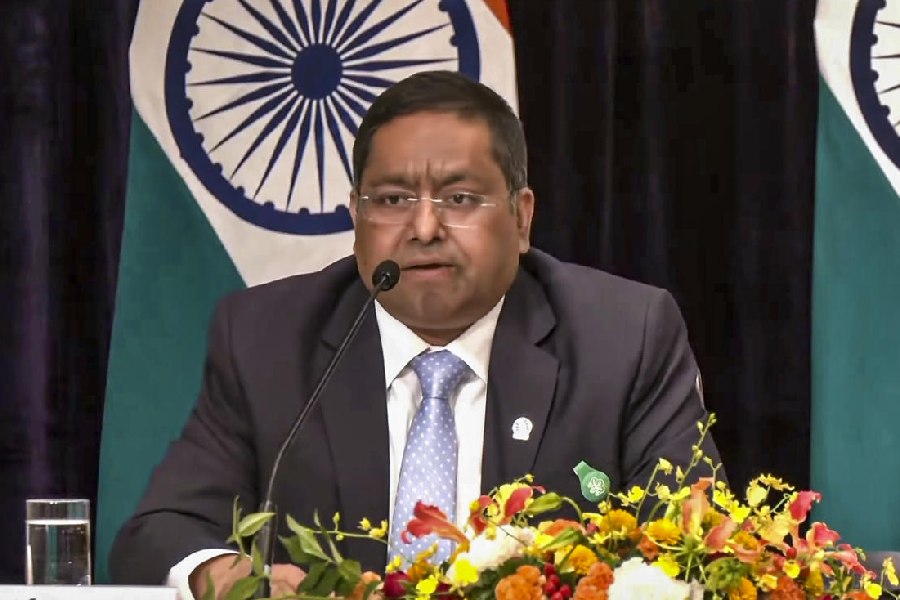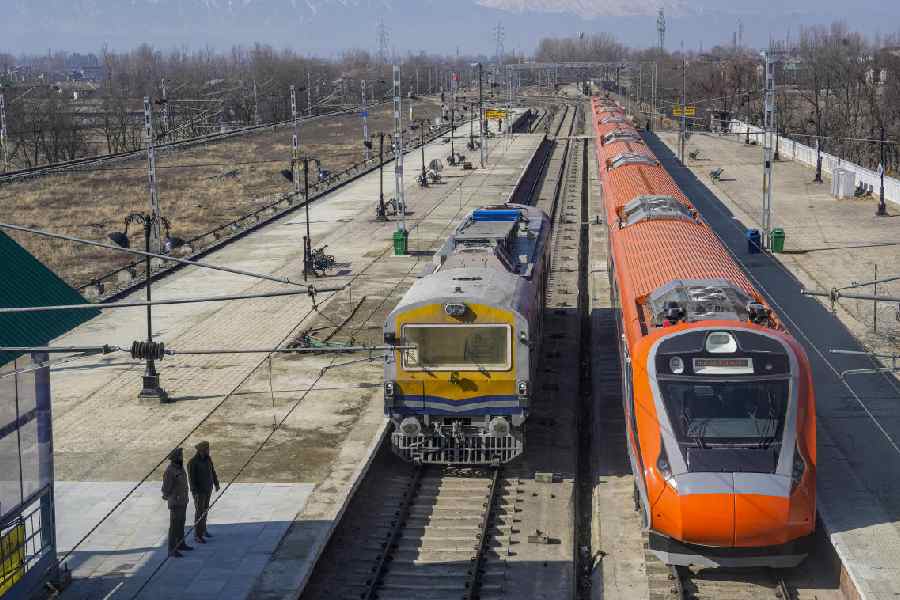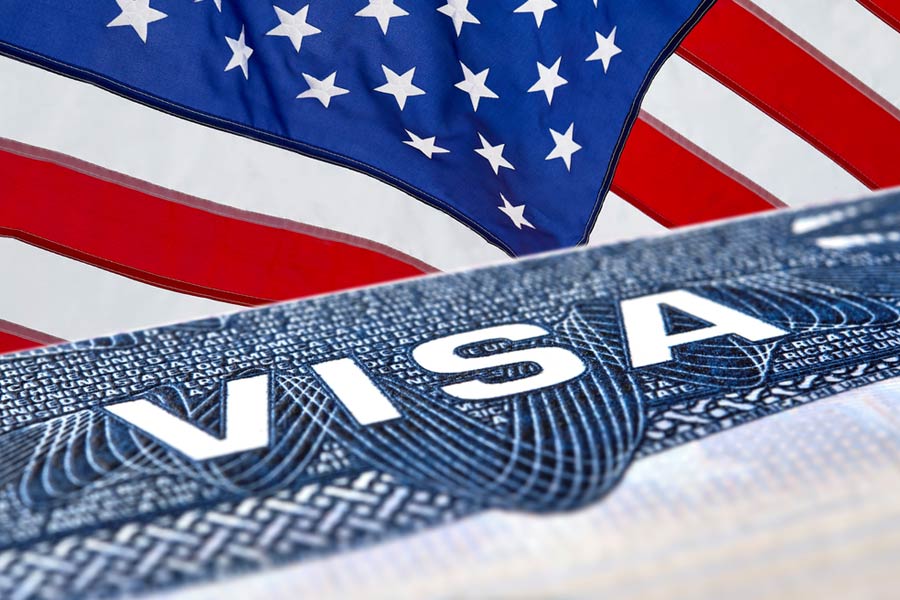President Donald Trump’s tough talk on China typically centers on tariffs. But a closer look at the decisions he has made since taking office shows that the president is considering a far wider set of economic restrictions on Beijing, ones that could hasten America’s split from a critical trading partner.
The Trump administration has so far proposed expanding restrictions on investments flowing between the United States and China. It has appointed officials who, because of national security concerns, are likely to push for more curbs on Chinese investments and technology sales to China. And Trump has ushered in a 10% tariff on Chinese imports, a move that he called an “opening salvo.”
After years in which officials from both parties gradually pared back America’s economic relationship with China, Trump’s moves suggest that he is prepared to sever ties more aggressively.
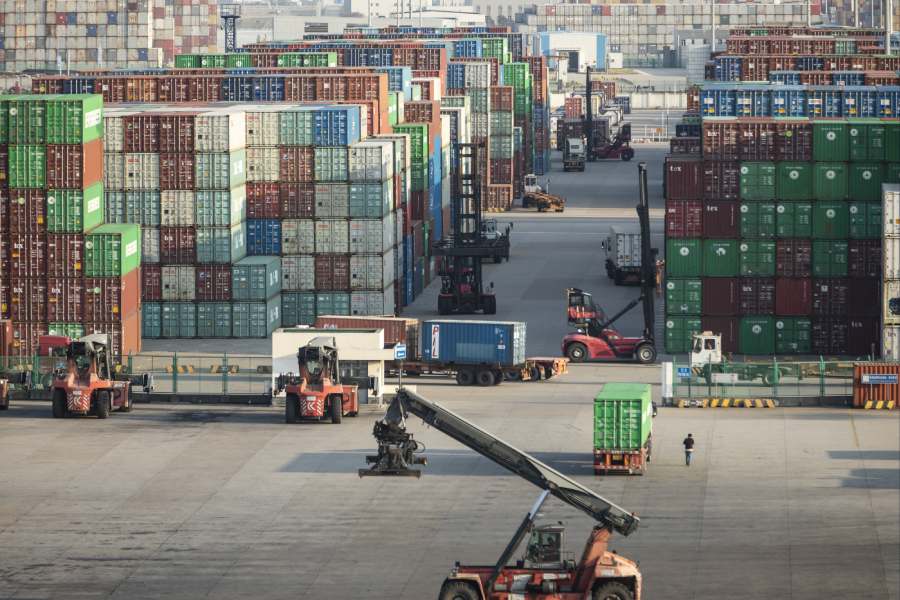
The Yangshan Port in Shanghai, Feb. 1, 2025. (The New York Times)
Samm Sacks, a senior fellow at Yale Law School’s Paul Tsai China Center, said the investment memorandum that the administration issued Friday read like “a call to finish the unfinished task of fully unwinding commercial ties with China.”
“So far, pragmatists have prevailed in getting a more narrow version of decoupling,” Sacks said.
The pronouncements could be “a bargaining tool” for Trump to kick off negotiations with Chinese leader Xi Jinping, Sacks said. “But should that fall apart or not work out — which is probably most likely — I see this as the blueprint to finish the job of decoupling.”
The main wild card in how far the United States will go appears to be Trump himself. The president is interested in potentially striking a deal with Xi, in part because of China’s failure to live up to the terms of an agreement the two leaders signed in early 2020. Current and former advisers say Trump takes a more transactional view to issues like Chinese investment than many of his more hawkish advisers, a position that could result in continuing economic ties in exchange for a deal that he feels benefits the United States.
During his first term, Trump backed off a plan that would have crippled ZTE, a Chinese electronics maker, after Xi helped secure a meeting between Trump and President Kim Jong Un of North Korea.
Trump’s advisers say the president could continue to ratchet up pressure on Beijing, since he may see that as way to force Chinese officials to make concessions. As a result, trade tensions could rise in the months to come.
Trump, who hit China with tariffs during his first term, imposed an additional 10% levy on all Chinese imports this month. The reason, he said, was that Beijing was not doing enough to limit the flow of drugs into the United States. China answered with its own tariffs on U.S. imports. It also restricted the export of certain critical minerals and initiated an antimonopoly investigation into Google.
A trade memorandum signed by the president on his first day in office directed his advisers to study other significant measures against China, such as revoking the permanent normal trade relations that the United States extended to China before it joined the World Trade Organization. And Friday, the Office of the United States Trade Representative said it was moving forward with a trade case aimed at protecting the U.S. shipbuilding industry against Chinese competition.
Trump’s team is also discussing ways to tighten U.S. export controls, including by patching perceived loopholes in regulations on chips and chipmaking equipment. Personnel appointments also point to a stricter stance on Chinese investment and technology sales.
Within the Commerce Department, which leads the efforts to limit technology sales to China, the Trump administration recently ousted several longtime employees, including Matthew S. Borman, a former deputy assistant secretary for export administration, in favor of new appointments. A nominee for assistant secretary of commerce, Landon Heid, advocated tighter restrictions on sales to Chinese technology companies while at the State Department.
On investment, Trump’s directive was a presidential memorandum rather than an executive order, meaning it did not immediately affect any policy. But it told the Treasury Department and other agencies in general terms to establish new rules to stop U.S. companies and investors from making investments that would aid China’s military advances, and stop people affiliated with China “from buying up critical American businesses and assets.”
The memorandum said that the Trump administration would create a “fast track process” for investment from U.S. allies, and that the United States would welcome all “passive” investments from foreigners, meaning investments in which they have no controlling stakes or managerial influence.
But it proposed harsher restrictions on certain foreign adversaries, like China, that it said were systematically investing in the United States to obtain technology, intellectual property and leverage in strategic industries like agriculture, minerals and shipping.
The memo said the Trump administration would expand the authorities of the Committee on Foreign Investment in the United States, or CFIUS, a body that reviews incoming investments for national security threats, to include “greenfield investment” — new facilities built from the ground up. It also ordered CFIUS to stop using “mitigation” agreements, in which companies make changes in ownership or technology to try to lessen national security concerns and allow acquisitions to go through.
Trump directed his advisers to consider expanded restrictions on emerging technologies, as well as whether to apply limits to more types of investments, such as pension funds and university endowments. He also ordered them to review the special structure that Chinese companies typically use to list on U.S. stock exchanges, which critics say limits ownership rights and protections for U.S. investors.
Critics say investment flows between the countries have aided the Chinese government and military, including by funding activities contrary to U.S. national security and helping U.S. technology flow to China.
The New York Times News Service

